Photo courtesy of Grouse Mountain
This week it's ski resorts under the microscope. Like softgoods and skis, resorts and individuals are finding unique ways to make skiing more sustainable. Ski resorts need skiing, it's kind of in the name! And for that, they need snow. This week we take a look at a couple of ways that they are adjusting their ways of doing things, from environmentally friendly snow cannons to recycled park features A couple of veterans of the industry discuss different approaches to limiting our impact.
_
“I think it’s important with these resorts, to not ‘demonize’ them.”Jeremy Jones, Founder and President of Protect Our Winters.
Jones is 100% correct in that. Resorts are at the core of what we do and probably always will be. We’re just looking at possible solutions and how people are thinking creatively about how our sport can reduce its impact on the planet.
That’s not the entire quote either, he continues:
“I love the innovation of that snow-making, for example. There are electric snowcats in the works and there are electric snowmobiles in the works.”
We’ll look at the electric snowmobiles and snowcats in Travel, so first, let’s look at those snow-cannons.
_
Snowmaking for 'free'
In recent years, snow patterns have become more and more erratic. Sometimes there’s no snow at Christmas, but fresh dumps in April. Sometimes it’s just sporadic throughout the winter. This unpredictability has increased resorts’ reliance on artificial snow-cannons, but they’ve actually been around since the 1950s. Back then the snow was made by breaking up big blocks of ice, but this takes a lot of time and effort, so the modern way is to turn water into snow using some scientific wizardry (if you’re keen to know more feel free to click this link: https://snowmakers.com/snowmaking-basic.html). The process isn’t great for the environment and it wastes a lot of water.
Norwegian researchers, at NTNU, are developing a snowmaking machine that offsets this waste by allowing their machines to also heat houses.
For a more detailed description, I spoke to Prof. Trygve M. Eikevik to describe how the machine is a refrigeration system or a heat pump. Like a refrigerator, it has a cold side and a warm side. “The cold side can be used to make snow and the warm side can be used to heat buildings, structures, make warm water for a swimming pool etc. If you are able to make the system in such a way that you can utilize the heat, you will have the snowmaking for free.”
He says the machine was inspired by the unstable snowfall at his local hill, Trondheim, but the results of the project will be available to everyone.
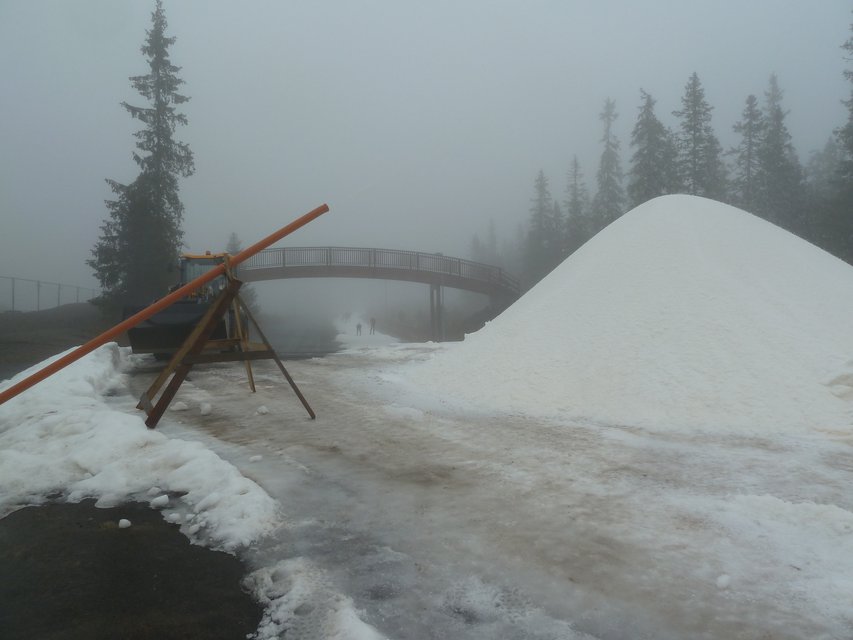
The first prototype is yet to be built, but The Snow for the Future's suppliers have similar machines Credit:Jon-Brede Dieseth/NTNU
Covid restrictions have interrupted the plans of the proposed three-year-project. They were into the final year, focusing on the machinery, a system-planning tool and a competence web site for the ski destinations, before the pandemic.
FIS is involved and the professor hopes that the knowledge will be spread widely.
_
Recycled Park Features:
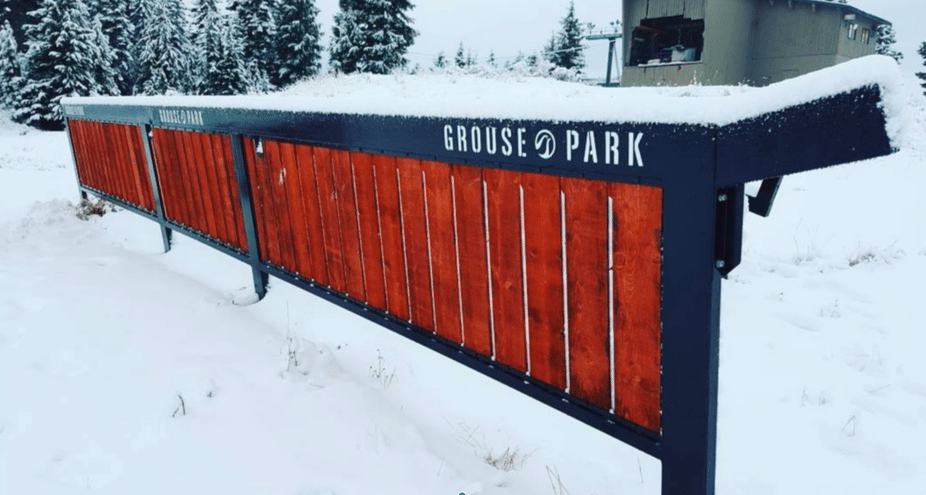
Photos courtesy of Grouse Mountain
For an example of a more park-focused project, we turn to Grouse Mountain, which has had a 'recycled' park for about ten years now. Grouse’s Park manager, Marcus Cartwright decided to revamp their entire feature fleet, which was still ‘made up of late-90s/early-2000s style features’. I.e really tall features, tons and tons of flat bars. The decision to make a recycled park was more economical than environmental
“We started off by scrapping all the features we didn’t like and used all that scrap to build more up-to-date and relevant features. We turned our fleet of 35 features into just over 60 features in a single summer/fall season. After that, some of the other departments on the hill always asked us if we’d be interested in scrap metal for the park. It wasn’t always useful but it created a kind of culture around it.”
“We did get about 10 extra features that first go around, mainly snowmaking tubes and lift tower tubes. Even at one point, we got a tram hanger. To this day, we still get asked if we’d be interested in scrap metal.’
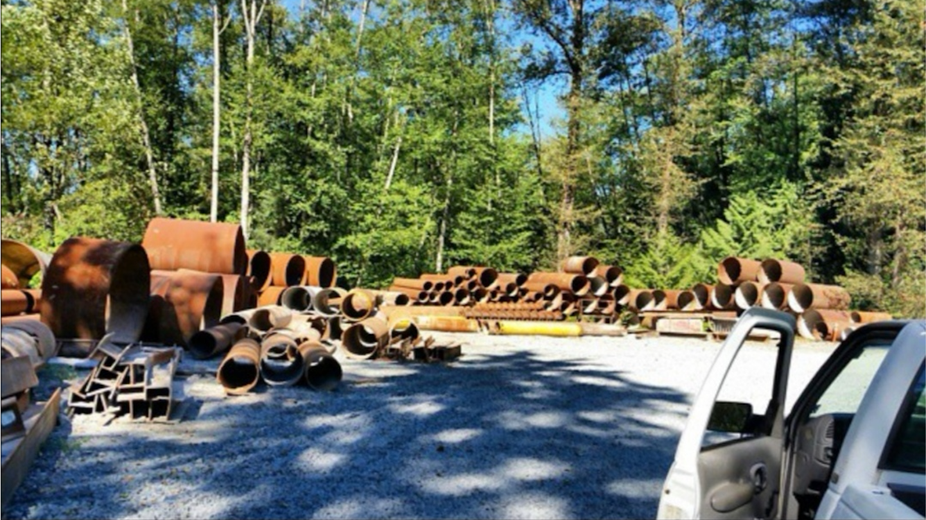
But they didn’t stop there. For years, before Marcus started, all branding on features was done with vinyl die cuts. “The process was pretty wasteful," he tells me. "In my mind, I knew this was an easy fix. I outsourced a local sign printing shop and got them to make aluminium stencil for branding. No more garbage, just recycled spray cans.”
“We used to cruise the junkyards in the lower mainland to find unique features to jib. Every once in a while we’d stumble across an old diesel tank or piece of metal stairs. It was really hit or miss. At one point we got an old shipping container and made it jib able. We used it in the Red Bull uncorked project a few years back.”
At first, they were just trying to save a buck – ‘cause at the time terrain parks were an overlooked attraction – over time it made them look at things a bit differently.
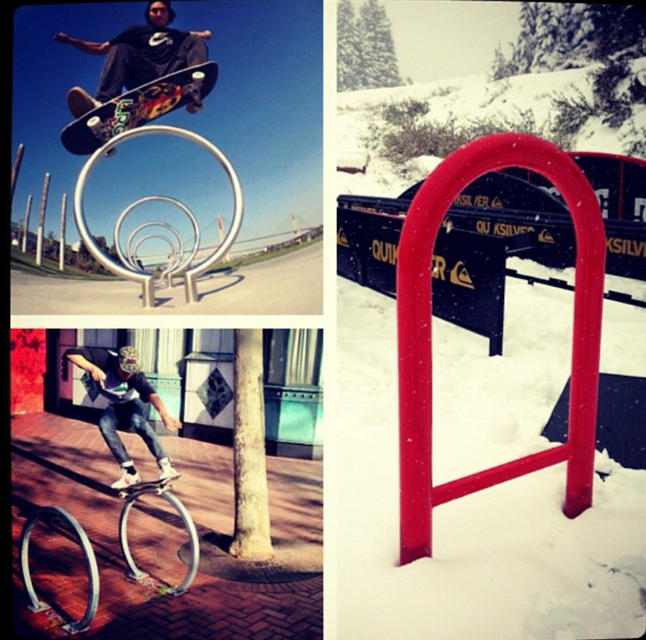
“How can we be more resourceful? How can we be more self-sufficient? Overall sustainability became the positive consequence of what we trying to create.”
Eating and Drinking:
Outside of the park, they don’t use straws at Grouse and all the cutlery in the cafeteria is biodegradable. They have composting bins and have created a seasonal vegetable and herb garden, which they use in their finer dining restaurants.
Food is one aspect of resorts, and general life, that a couple of skiers think we should focus on.
Mark Abma says that food has such a huge environmental impact on our planet: “I think if resorts just provided more local or organic produce, I think that’d be a huge help as well. Right now, most of our food is being flown all over the world, no different to our ski gear.”
“Ski Resorts, typically, buy the most cost-effective food possible. Quite often I go to a ski resort and I think we’re not eating great food when we’re there. Like ‘oh whatever, we’re at a ski resort, we’ll just eat a burger and fries.’ I think increasing the quality of food and where we get it from, is something that we can keep working on.”
So hopefully more resorts will follow Grouse’s example with growing their own produce, but Jacob Wester says that a vegetarian diet can have a huge impact on the environment:
“Some people think that commercial air travel is the biggest contributor to global warming before they even look at the numbers. I saw statistics that a vegan in a Hummer (truck) has a smaller carbon footprint than a meat-eater on a bike. That’s quite telling when you think about it.”
So, next time you go skiing, maybe take an apple and a sandwich with you!
_
Electric and alternatively fuelled snowcats, snowmobiles and car-free resorts will all be covered in travel, but if your local hill is doing some of that innovation that Jones is loving, let everyone know in the comments.

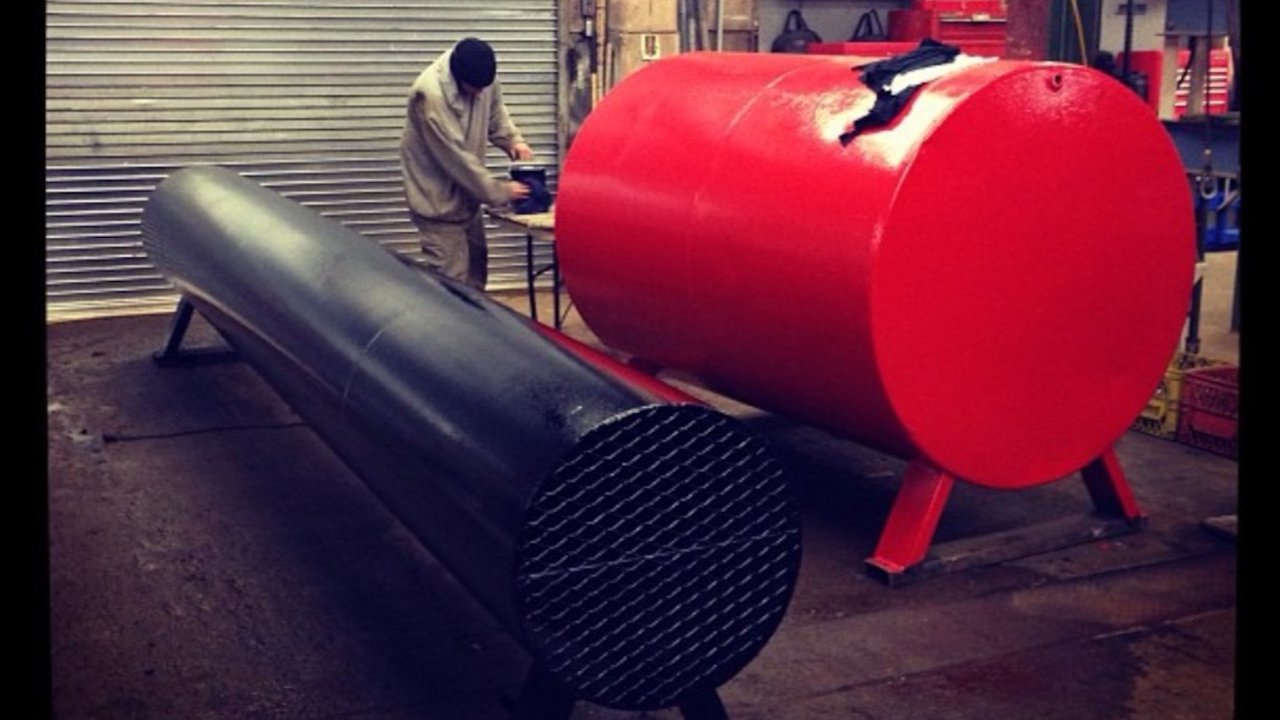
Comments